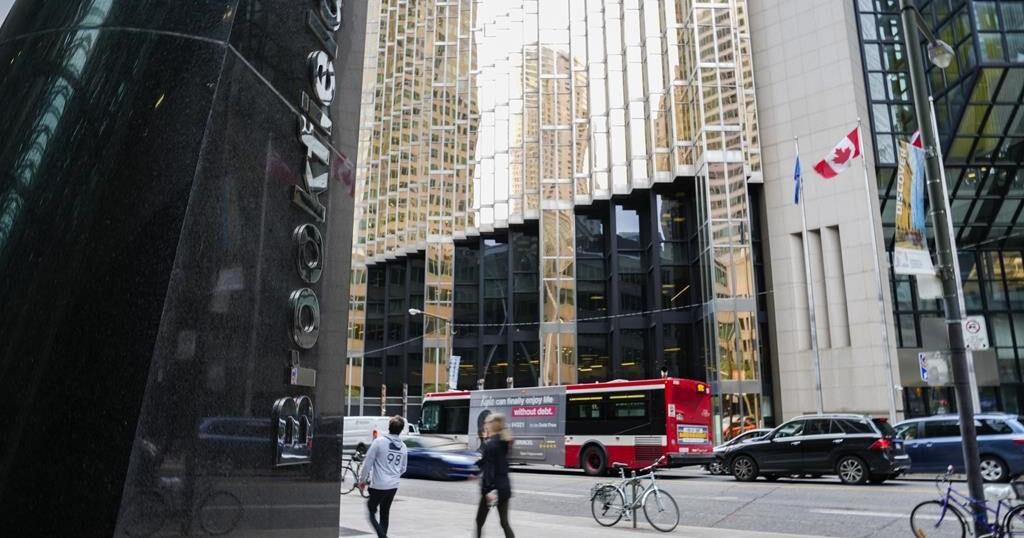TORONTO – Gains in the financial, industrial and utilities sectors led Canada’s main stock index higher on Monday, while U.S. stock markets also rose.
Monday saw a bit of a reversal from last week, said Greg Taylor, chief investment officer at Purpose Investments, which was marked by a lot of weakness and uncertainty heading into the weekend.
Tech stocks fell last week, giving back some of the gains from a months-long rally in equities. But on Monday, markets felt a lot more calm, said Taylor — after the weekend saw U.S. president Joe Biden announce he wouldn’t run in the upcoming election.
“It feels like with Biden stepping back, and no one challenging (Kamala) Harris, that it feels like it could start to quiet down in the election front for the next little bit. And that seems to be good news,” said Taylor. “So we’re unwinding some of that nervousness in the market.”
In New York, the Dow Jones industrial average was up 127.91 points, or 0.3 per cent, at 40,415.44. The S&P 500 index was up 59.41 points, or 1.1 per cent, at 5,564.41,while the Nasdaq composite was up 280.63 points, or 1.6 per cent, at 18,007.57.
The S&P/TSX composite index closed up 182.26 points at 22,872.65.
Though the election itself is still looming, shedding the uncertainty over who will be running against Donald Trump seems to have given the markets some relief, said Taylor.
“I think what we’re going to see now is the market might actually for a few weeks shift back to focusing on earnings,” he said.
“I think that would be a welcome change of pace.”
It’s still early in earnings season, said Taylor, but this week will bring reports from a slate of big companies including Alphabet and Tesla on Tuesday.
Investors will be looking at companies’ spending on artificial intelligence, which has been a main driver of the recent strength on Wall St., and eyeing whether any companies are scaling back on that spending, said Taylor.
“That’s starting to creep in as a fear for this AI hype that maybe we’ve jumped the gun and gotten a little ahead of ourselves.”
Last week, as tech stocks were falling, investors started rotating toward other sectors on the market, which is a healthy thing, noted Taylor.
Even though investors seem back on board with tech this week, he hopes that broadening will continue.
“That is the bull case for the market,” Taylor said.
In Canada, investors are waiting for Wednesday, when the Bank of Canada will announce its interest rate decision. A cut isn’t guaranteed, but many think it’s likely, said Taylor.
“It does seem like the betting market is that they’re going to do one more cut and then pause,” he said, adding that the central bank after that will likely want to wait until the U.S. central bank begins cutting to avoid a large differential in rate policy.
The U.S. Federal Reserve is expected to start cutting in September, he said.
The Canadian dollar traded for 72.70 cents US compared with 72.85 cents US on Friday.
The September crude oil contract was down 24 cents at US$78.40 per barrel and the August natural gas contract was up 12 cents at US$2.25 per mmBTU.
The August gold contract was down US$4.40 at US$2,394.70 an ounceand the September copper contract was down four cents at US$4.20 a pound.
— With files from The Associated Press
This report by The Canadian Press was first published July 22, 2024.
Companies in this story: (TSX:GSPTSE, TSX:CADUSD)
